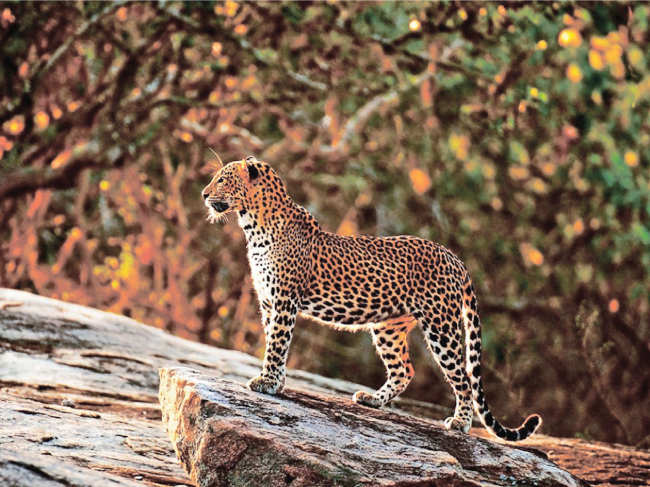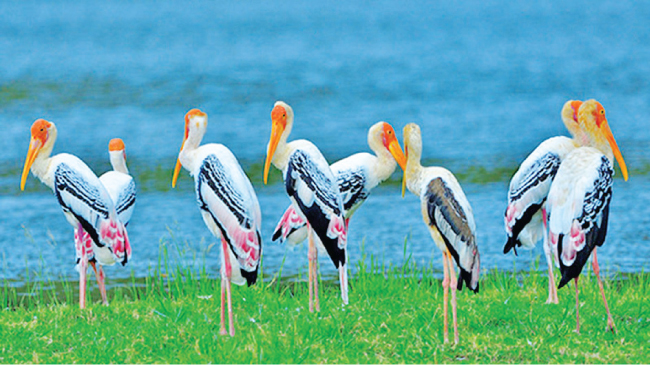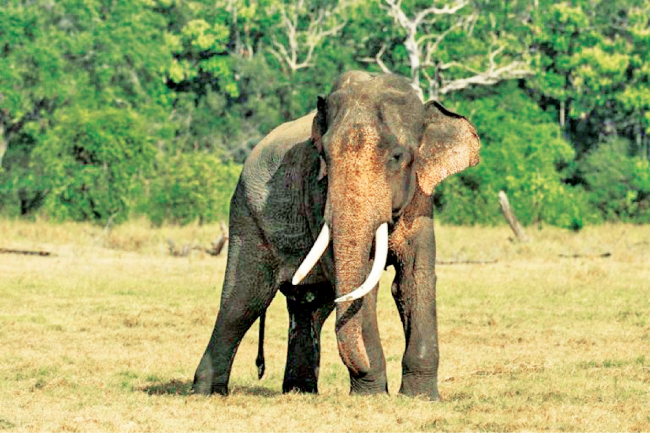Tourism can raise environmental awareness among tourists. From camping to beach lounging, tourism provides countless opportunities for individuals to learn about the natural world and experience it firsthand. When people connect with nature during their travels, it can inspire them to appreciate nature and become part of the conservation effort. The Great Barrier Reef, Yellowstone, Amazon Rainforest are internationally known hotspots. One of the top reasons that tourists are drawn to destinations such as these is because of their rich biodiversity and unique landscapes. Wildlife tourism supports nearly 22 million jobs around the world and contributes more than $120 billion to global GDP. This growing interest in wildlife tourism and the economic benefits that come along with it can change community attitudes towards conservation. Wildlife remains a major concern for the international and local communities. Among the multiple risks that menace wildlife are: diseases, climate change and actions of humans- such as poaching and illegal trafficking. Wildlife represents biodiversity essential for our health and the well-being of the whole planet.
A wildlife corridor is a link of wildlife habitat, generally native vegetation- which joins two or more larger areas of similar wildlife habitat. Corridors are critical for the maintenance of ecological processes including allowing for the movement of animals and the continuation of viable populations. By providing landscape connections between larger areas of habitat, corridors enable migration and interbreeding of plants and animals. In Sri Lanka most of the conflicts related to wild elephants stems from unprotected wildlife corridors that have seen selfish human intrusion.
Wildlife corridors are a key artery in wildlife tourism. These corridors play an important role in the maintenance of biodiversity. It is important, that vegetation remnants and vegetated corridors are maintained and enhanced as a network across all lands both private and public. In this way private landscapes can contribute to wider landscape conservation efforts by enhancing and linking existing reserves and conservation networks. As these vegetation patches are reduced in size and become increasingly isolated, the on-going viability of ecosystems and individual populations of species within them is affected.

Management of a corridor should aim to retain and enhance the existing vegetation cover and wildlife habitats. The acceptance that human development needs to be adapted to preserve and enhance the natural processes of ecosystems is reflected in the increasing reference of the term “green infrastructure.” How many of Sri Lankas tourism projects are planned on this concept? The concept of green infrastructure supports that spatial planning and territorial development consciously integrate the need to protect and enhance nature and natural processes.
In Cambodia, for instance, ecotourism is motivating communities to conserve critically endangered bird species, such as the giant ibis and white-shouldered ibis. Thousands of tourists come from across the world to see these iconic species. The prudent tour operators incentivizes community-based conservation in the region by training and employing locals as guides and ecotourism providers, and requiring visitors to donate to village development projects. In return for this income and employment, community members agree not to hunt or cut down trees. This is how to create a win-win situation. We are aware of the news reports of leopard deaths, and how they could have been avoided in Sri Lanka. Why does this cycle repeat? Many wild elephants have died this year, another cause for deep concern.

Due to the popularity of coastal tourism in particular, reef-based activities such as scuba diving, snorkeling, boat trips and whale watching are a particularly important source of economic revenues. In fact, it is estimated that coral reefs generate $36 billion in global tourism value per year. Many countries rely on the income that comes from marine-based tourism and see the importance of protecting their coastlines, coral reefs, and beaches. Kalpitiya in Sri Lanka boasts itself as an alluring whale watching destination. Does the fishing community in Sri Lanka care about sustainability and protecting the marine domain, as they struggle to make ends meet amidst challenges? Greater effort must be made to protect our sensitive coral reefs.
While park rangers and guards play a critical role in patrolling sensitive environments, tracking ecosystem health, and warding off threats, it is often impossible for them to monitor such vast areas by themselves. The mere presence of tourists in natural areas can protect wildlife by providing an extra set of eyes on the ground. In fairness to Sri Lankan wildlife rangers and guards they need enhanced welfare, job respect and access to modern technology i.e drones to trace invasive elephants or track leopards. They do an excellent job with limited resources, in comparison to other countries. The Department of Wildlife Conservation, Department of Forest Conservation and Department of Coastal Conservation are key stakeholders and guardians of Sri Lankas flora, fauna and forests.
Globally, wildlife watching particularly overlaps with ecotourism, which is a form of tourism based on the principles of making an active contribution to the conservation of natural and cultural heritage. It must extend to involving local and indigenous communities in its planning, development and operation, also contributing to their well-being. Some destinations face gross overcrowding, such as South Africa’s Krueger National Park or the Masai Mara in Kenya where you have tourists looking at other tourists, instead of at lions. Wildlife watching can also include appropriately operated mass tourism activities. European tourists are increasingly concerned with the well-being of wildlife and are willing to pay more to see animals in the wild instead of visiting zoos. Feeding animals or making them do tricks is considered unacceptable, because it is not how the animals behave naturally and is not good for their well-being. Wildlife enthusiasts are often loyal and come to the same destination multiple times. As these tourists are more informed about wildlife, they also tend to have higher sustainable awareness. Many of these tourists are members of nature-related organizations.
A constant conflict in Sri Lankan wildlife parks is the number of safari vehicles allowed and their impact. Much has been written on this topic by others so I will refrain. Congratulations to the Ridiyagama Wildlife Park (Hambantota) for introducing a new and adventurous way to enjoy wildlife. I have written on this beautiful park last year.
Much of the wildlife that tourists want to watch is located in rural areas. These tend to be poorer than urban areas, and to offer fewer employment opportunities. In these areas, wildlife watching tourism can potentially provide an alternative source of income and employment i.e In Mannar where seasonal tourism is generated by the presence of migratory birds, with the flamingoes dominating the list. For tourism to be viable and profitable, it needs to meet the standards that are expected by the market including in the ways that it is designed, priced and marketed, the reliability and quality of the services and experiences that are offered. Most tourism marketing talks about Wilpattu and Yala National parks but how many have visited other parks like Chundikkulam National Park – Kilinochchi (sanctuary status given 1938), Angammedilla National Park and Ussangoda National Park?
Because of its economic importance and influence, globally tourism can trigger environmental innovation through the advancement of green infrastructure, processes and technologies. For instance, tourism can lead the way in the development of renewable energy infrastructure, like wind and solar farms in rural areas that would not usually be exposed to clean energy. This must be done without disturbing the local way of life. Ideally, ecotourism should facilitate the involvement and experiences of indigenous people as integral to the travel experience by using and acknowledging their role as stewards of the environment. This is an industry that is potentially sustainable, capable of providing local peoples with the opportunity to manage their engagement with the outside world to their own benefit. The cultural diversity and knowledge of indigenous peoples can bring innovative experiences for tourism. This is true for Sri Lanka and her ancient Veddah community. Most travel agencies display photos of Veddah people on their websites, but what do these companies genuinely give back to sustain the traditional way of life? Only a few corporates have had good CSR engagements to sustain the Veddah of Sri Lanka. Sadly many ‘duplicate’ Veddahs have also emerged for exotic photo shoots.
For ecotourism to deliver on its promise, advocates must honour the commitment to create the conditions under which indigenous societies can exercise self-determination. The United Nations World Tourism Organization (UNWTO) defines cultural tourism as ‘a type of tourism activity in which the visitors essential motivation is to learn, discover, experience and consume the tangible and intangible cultural attractions/products in a tourism destination’.
Many disregard local communities in the initial tourism planning. This has caused resentment among community members and unwilling to take part in the tourism activities as they are excluded in the process of tourism planning. Empowerment consists of four dimensions: economic, psychological, social and political aspects; these stress the value of control and benefit-sharing of tourism development by local communities. Agro- Tourism is also a new concept that beautifully supplements wildlife tourism- if planned and done properly. Sri Lanka has tremendous natural resources and creative stakeholders in tourism. Tourism has been resilient in every crisis situation, and can bounce back with amazing results. All tourism stakeholders at every level must be better empowered to reach new heights of success, with sustainable tourism at its foundation and Government policies that support these measures.
Dishan Joseph






